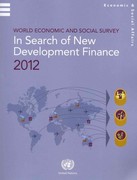Question
23. Joe's Build Back Better (BBB) Ammo Corp has $15 million in cash, which it has accumulated from retained earnings. It was planning to use
23. Joe's Build Back Better (BBB) Ammo Corp has $15 million in cash, which it has accumulated from retained earnings. It was planning to use the money to build a new factory. Recently, the interest rate has increased. How does this influence the company's decision, assuming the alternative to investing in a factory is loaning the money out?
(A) It doesn't, since the company's shareholders are expecting a new factory.
(B) It is more likely to build the factory because a higher interest rate makes the factory more valuable.
(C) It is less likely to build the factory, since the opportunity cost of using the funds to build a factory rises with a higher interest rate.
(D) It doesn't influence their decision, since the company does not need to borrow money to build the factory.
24. What would be associated with the type of unemployment created by the minimum- wage law?
(A) In hopes of earning a higher income, Lucas goes back to school to become an electrician.
(B) Cam quits his job in a grocery store because he would rather work in landscaping.
(C) Wayne decides to close his Thai restaurant because he cannot afford to pay workers the going wage.
(D) Nicole pays the workers for her auto mechanics business more than the equilibrium wage because she believes it will make them work harder.
25. If an unemployed person quits looking for work, other things equal, which statement best describes the changes in the labour statistics?
(A) The unemployment rate and the labour-force participation rate stay the same.
(B) The unemployment rate stays the same, and the labour-force participation rate decreases.
(C) The unemployment rate decreases, and the labour-force participation rate de- creases.
(D) The unemployment rate decreases, and the labour-force participation rate in- creases.
26. Which of the following is NOT a determinant of demand?
(A) The price of a substitute good.
(B) The price of an input to production.
(C) The price of a complementary good.
(D) The expected price of the good next month.
Step by Step Solution
There are 3 Steps involved in it
Step: 1

Get Instant Access to Expert-Tailored Solutions
See step-by-step solutions with expert insights and AI powered tools for academic success
Step: 2

Step: 3

Ace Your Homework with AI
Get the answers you need in no time with our AI-driven, step-by-step assistance
Get Started


